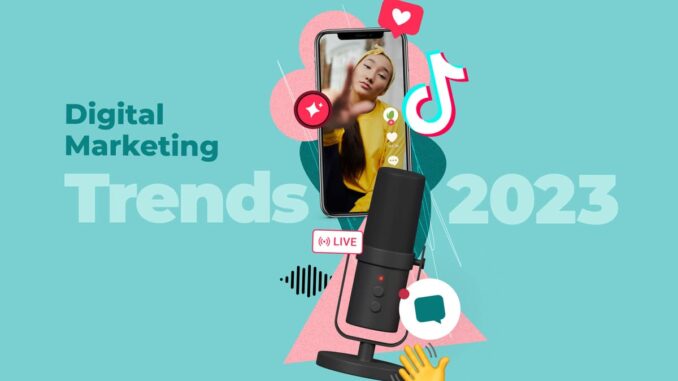
With the ongoing growth of TikTok, the introduction of AI, and the monumental rise of the creator economy, 2023 is shaping up to be a hectic year for digital marketing. Fuelled by technology, innovation, and a consumer-driven landscape, the coming year will see big shifts in how marketers think about attracting and engaging customers online (and offline). We predict 2023 to be a year of embracing new technology, revisiting traditional marketing methods, and doing things differently.
If you thought the only effective place to advertise was online, think again. Despite the pandemic turning millions of consumers into digital shoppers, brands are beginning to embrace the opportunities presented by offline promotional tactics again too. That’s right – 2023 will be about omnichannel marketing and complementing online activity with real-world, immersive experiences.
Whether you’re a freelance creative or a small business owner, it’s easy to showcase your skills and promote your products – when you know how. Check out our digital marketing guide to learn how to develop a consistent visual identity, solidify your social media strategy, and get to grips with SEO.
As brands seek to convert young followers into paying customers, they must learn to speak Gen Z’s language. Many marketers are now engaging in ‘algospeak’ – a term that refers to abbreviations, code words, or turns of phrases designed to bypass content moderation filters on social media channels. For example, ‘panini’ or ‘panda express’ popped up when platforms started down-ranking videos mentioning the ‘pandemic’ to combat misinformation.
Consumers no longer tolerate performative activism or brands jumping on the bandwagon of a cultural moment. Just think of the backlash businesses (rightly) experience when their logo lights up with rainbow colors during Pride month, despite failing to demonstrate their support of LGBTQ+ rights throughout the rest of the year.
To get this right, marketers must communicate their company’s mission, values, and employee stories accurately and effectively across channels. Successful influencer partnerships can also be beneficial for driving a business’s purpose, but it can be easier said than done in a crowded and evolving creator economy.
Podcasts continue to be popular among influencers, content creators, media outlets, and publications, providing a way to connect with audiences without needing visuals or video. In 2023, we predict that even more brands will explore audio marketing – a potentially more personable way to connect with consumers than other forms of marketing.
This shift to spoken word-of-mouth marketing has also given rise to audio advertising opportunities, with ads from fashion labels to electric car manufacturers and digital banks popping up before, during, and after third-party podcasts. For example, Canadian whisky brand, JP Wisers, ran a campaign on Conan O’Brien’s Needs a Friend podcast which was spoken by the talk show host himself.
Don’t underestimate the power of employee endorsement; for many brands, employees can be their biggest cheerleaders. We know influencer marketing works because people trust people over brands, so who better to market a company’s products and services – or the company itself – than the people who know it best?
The way we search is changing. There are now more options to find what we’re looking for, thanks to Google’s image and voice search options. Users can now drop an image in the search bar, upload a file, or paste a link to find similar visuals, which is especially useful if you don’t know how to describe your query. Alternatively, click the microphone icon to speak your search request. These new search opportunities will likely significantly impact how we discover and purchase products. And as a result, SEO will become much more complicated.

Leave a Reply